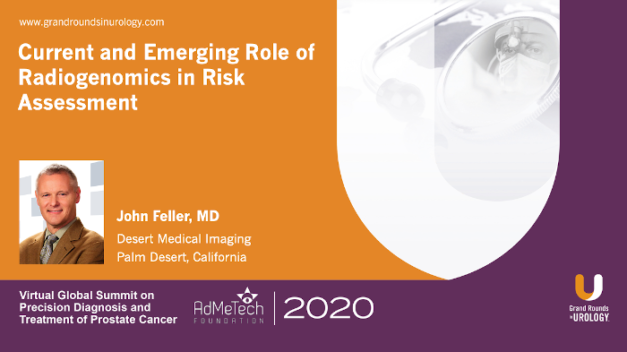Recent Advancements in PI-RADS: mpMRI vs. bpMRI
Jelle Barentsz, MD, PhD, Professor of Radiology at the Nijmegen Medical Center of Radboud University in Nijmegen, The Netherlands, begins his talk on recent advancements in the prostate imaging-reporting and data system (PI-RADS) by asserting the value of local magnetic resonance imaging (MRI) in the diagnosis of prostate cancer. He cites the 2019 European Association of Urology (EAU) guidelines, which recommend performing a prostate MRI before biopsy, and points out that this results in 2,000,000 MRIs annually. He asserts there is a need for fast MRI, citing a PI-RADS committee position on MRI without the use of gadolinium (Gd)-based contrast medium (biparametric MRI, or bpMRI) which suggests that if certain prerequisites are satisfied, bpMRI may offer a fast MRI option for some patients. Dr. Barentsz then cites three studies. The first compared screenings using multi-parametric MRI (mpMRI) with bpMRI and found the prostate cancer detection rate was identical (but it failed to specify which patients had insignificant vs. clinically-significant prostate cancer [csPCa]). The second study compared single-plane (or “fast”) bpMRI vs. mpMRI and concluded mpMRI found nine percent more csPCa; however Dr. Barentsz points out the study was underpowered and used an older technique, a 1.5T endorectal coil (ERC) MRI. Dr. Barentsz explores data from the third study, which found that mpMRI and fast bpMRI demonstrated equal sensitivity in finding csPCa, at 95 percent. He outlines the pros and cons of the fast bpMRI, emphasizing that for less-experienced radiologists, the procedure increases uncertainty. Dr. Barentsz explains that the PI-RADS committee concludes there is a need to have both unenhanced MRI and contrast-enhanced MRI approaches available for prostate-cancer diagnosis. Dr. Barentsz then turns to the issue of costs, showing data comparing the direct cost of mpMRI, bpMRI, and “fast” bpMRI, specifying that mpMRI is more than twice as costly as “fast” bpMRI. Dr. Barentsz asserts that dynamic contrast-enhanced (DCE)-MRI is a better choice for patients with a previous negative bpMRI with persistent clinical suspicion, DWI-artifacts (e.g., hip prosthesis), and for doctors with a lower level of expertise. Dr. Barentsz then explains situations when bpMRI (no DCE) may be an appropriate choice, such as in a low-risk (screening) population or when there is a high chance of having significant prostate cancer. Dr. Barentsz concludes his talk by stating that bpMRI can be effective for very skilled prostate radiologists. He reiterates that DCE helps find small tumors, reduces uncertainty, and increases confidence. He also states that the prerequisites for bpMRI are good quality imaging, and specifies the need for objective quality assessment and control as well as training and certification.
Read More


